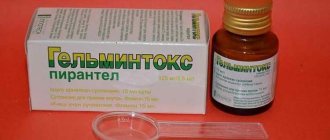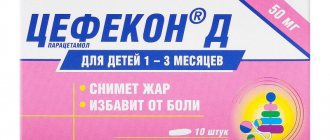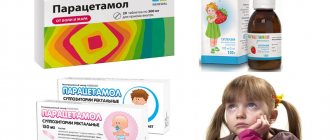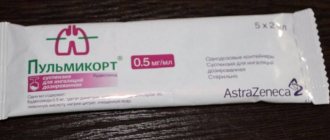- November 4, 2018
- Other drugs
- Gena Poddubny
In the article we will look at the instructions for use of the Azitrox suspension for children.
This drug is one of the most popular antibiotics in the treatment of various inflammatory and infectious diseases. Can it be used in the treatment of children, what is the dosage of therapy and what side effects can be expected from this medicine?
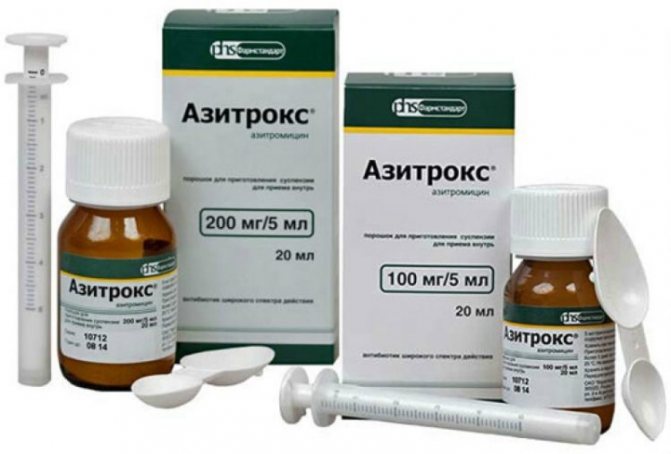
“Azitrox” in suspension is an antibiotic that belongs to the group of azalides, which are aimed at slowing the growth of pathogenic organisms and suppressing their activity.
This drug is prescribed to small patients over the age of six months for the treatment of various infectious diseases, including those complicated by the development of bacterial microflora, such as infectious lesions of the upper and lower respiratory tract, urogenital diseases, as well as skin and mucous membranes.
Release form
The pharmacological agent "Azitrox" is produced in several forms, but the most convenient for children is the powder from which a medicinal suspension is prepared. It is presented in two main versions, differing only in the dosage of the active element. The 15.9 gram powder is placed in a tinted glass bottle that can hold 50 ml of liquid. The cardboard package contains one bottle with a pipette, as well as a measuring spoon and instructions with the rules for using and taking the medicine.
The powder has the form of white crystals or granules (may have a yellow or creamy tint), and the medicine made from it (after adding water) is a homogeneous yellowish-white or creamy-white suspension, with a fruity odor.
The composition of the Azitrox suspension for children is indicated in the instructions for use. Let's take a closer look at it.
Composition of the drug
The main active ingredient of the Azitrox suspension is azithromycin (in the form of dihydrate). A medicinal product with a dosage of 100 mg per 5 ml of this substance contains 400 mg, and in bottles of 200 mg per 5 ml - 800 mg of azithromycin.
The pleasant sweet taste, due to which the finished suspension resembles syrup, is provided to the medicine by the sucrose present in its composition. Additionally, the preparation contains sodium carbonate, hyprolose and xanthan gum. The pleasant aroma of the suspension is due to the presence of vanilla, cherry and banana flavors in it.
Release form of the drug
Azithromycin is produced by various modern companies in several release forms:
- Tablets (125, 250 and 500 mg).
- Capsules (250 and 500 mg).
- Solution for preparing injection.
- Powder for preparing a suspension containing 100 and 200 mg of active ingredient per 5 ml of solution.
In childhood, it is the latter form of drug production that is most often used.
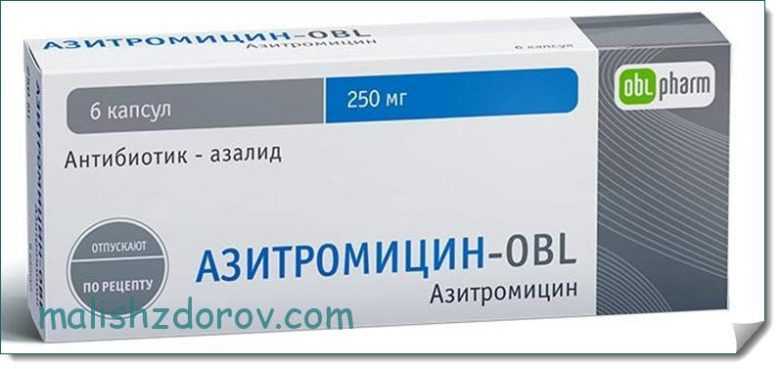
This is due to the fact that it is easier for a child to take a suspension than, for example, a tablet form of a medicine.
Pharmacological properties
Azithromycin (the main active element) is an antibiotic with a wide spectrum of action, and represents a subgroup of macrolide antibacterial substances - azalides. By binding to the 50S ribosomal subunit, the drug inhibits peptide translocase at the translation stage, suppresses protein production, and slows down the reproduction and development of pathogenic bacteria. The Azitrox suspension has a bacteriostatic effect on extra- and intracellular pathogens, and in high concentrations has a bactericidal effect.

Pathological microflora, in relation to which the active element of the drug exhibits functionality: aerobic gram-positive microorganisms: Streptococcus spp. (A, B, C, G), Streptococcus pyogenes, Staphylococcus aureus (methicillin-sensitive), Streptococcus pneumoniae (penicillin-sensitive); aerobic gram-negative microbes: Haemophilus parainfluenzae, Pasteurella multocida, Moraxella catarrhalis, Legionella pneumophila, Haemophilus influenzae, Neisseria gonorrhoeae; other anaerobic microorganisms: Clostridium perfringens, Fusobacterium spp., Porphyromonas spp., Prevotella spp., as well as Borrelia burgdorferi, Chlamydia (trachomatis, psittaci, pneumoniae), Mycoplasma (hominis, pneumonia). Microorganisms that can develop resistance to azithromycin are gram-positive aerobes. Pathogenic microorganisms initially resistant to the effects of the Azitrox suspension: aerobic gram-positive, including methicillin-resistant strains of Staphylococcus epidermidis, Staphylococcus aureus, Enterococcus faecalis, Bacteroides fragilis. After taking the suspension, the maximum level of its main substance in the blood is observed after approximately 2-3 hours. The medication is able to penetrate the body's cell membranes and tissue barriers. When the last dosage is taken, the concentration of the pharmacological drug remains for another 5-7 days after completion of therapeutic measures.
Indications for use
Taking the medicinal suspension "Azitrox" for children is recommended in the following cases:
- sore throat, otitis media, sinusitis and other infections localized in the upper respiratory tract and ENT organs;
- early stages of Lyme disease;
- bronchitis, pneumonia in children;
- inflammatory pathologies of the urinary tract, provoked by microbes sensitive to this antibacterial drug;
- erysipelas, dermatoses and other skin infectious pathologies.
Indications for use
The antibacterial drug Azithromycin is prescribed to patients whose disease is caused by species of bacteria that are sensitive to the drug. This is usually confirmed by laboratory tests of blood and urine. The medicine is effective for the following conditions in the patient:
- Purulent sore throat.
- Otitis.
- Sinusitis.
- Sinusitis.
- Bronchitis of bacterial origin.
- Laryngitis.
- Initial stages of Lyme disease.
- Various dermatoses complicated by bacterial infections.
- Impetigo is a purulent inflammatory process of the skin.
- Pneumonia, including atypical course of the disease.
It is important to understand that the use of the antibacterial agent in question without a doctor’s prescription can be extremely dangerous to the life and health of the patient.

Under no circumstances should you give medicine to your child at home.
Contraindications
According to the instructions for use, Azitrox suspension for children is contraindicated if they are intolerant to macrolide antibiotics or additional components of this drug. In addition, it is recommended to avoid using the medication in the following cases:
- severe impairment of liver function;
- kidney dysfunction;
- sucrose deficiency;
- fructose intolerance;
- treatment with ergotamine and dihydroergotamine;
- glucose-galactose malabsorption.
With caution, experts prescribe the drug to children with diabetes mellitus, with moderate liver dysfunction in a child, as well as if the patient is prone to arrhythmias and myasthenia gravis.
The instructions for use of the Azitrox suspension for children also contain information about side effects.
special instructions
When prescribing Azithromycin to a child, the pediatrician must take into account the special instructions of the drug. In this case, it is necessary to remember the following nuances:
- Before each use, the suspension must be shaken, as the drug precipitates if left for 20 minutes.
- Each bottle comes with a special syringe that helps you measure the required dosage. After each use of the syringe, it must be disassembled, rinsed with warm water and dried. It is recommended to store the dispenser in a dry and clean place until next use.
- The shelf life of the finished suspension is no more than 5 days. In addition, it is necessary to take into account the recommended temperature for storing the medication. For example, Azithromycin Sandoz can be stored at temperatures up to 30°C, and Azithromycin Ecomed at this temperature loses its medicinal properties, so it should only be kept in the refrigerator.
- If for some reason a medication was missed, you should take the recommended dose as early as possible, and the next dose should be taken a day later.
- During treatment, the patient may develop symptoms indicating liver dysfunction. Such signs include weakness, nausea, headache, dark urine. In this case, it is recommended to stop taking the antibiotic and consult with your doctor.
In addition, during therapy with Azithromycin, the sensitivity of microorganisms that provoked a particular disease to the antibiotic should be periodically checked.
You may be interested in: Pantogam syrup for children: instructions for use
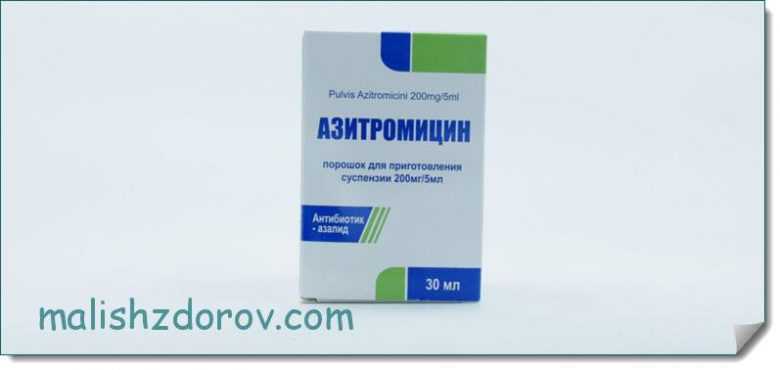
Expert opinion
Ksenia Dunaeva
User experience expert and comment moderator. Higher medical education and more than 5 years of actual practice.
Ask Ksenia
Sometimes, while taking the medication in question, a patient may develop a condition such as inflammation of the intestinal tract caused by anaerobic bacteria - clostridia. If a child experiences alarming symptoms from the digestive system some time after taking the medicine, you should definitely consult a doctor to rule out this type of infection.
Side effects
A child’s body, more often than an adult, reacts negatively to taking antibacterial medications, for example, the drug Azitrox. Therefore, children with this treatment often experience pathological symptoms such as dizziness, poor appetite, paresthesia, headache, impaired taste perception, nausea, abdominal pain, bloating, diarrhea, itching, weakness.
More rarely, the following side effects of the drug "Azitrox" for children are observed:
- decrease in the number of lymphocytes and eosinophils in the blood;
- sleep disorders – drowsiness, insomnia;
- excessive nervous excitement;
- dyspepsia (vomiting, nausea);
- bowel dysfunction (most often diarrhea);
- hepatitis;
- allergic reactions, up to Quincke's edema;
- candidiasis of the mucous membranes.
In extremely rare cases, the drug can cause pathological phenomena such as thrombocytopenia, anemia, fainting, anxious or aggressive behavior, deafness, convulsions, cardiac arrhythmia, decreased blood pressure, colitis and others.

The dosage of the suspension for children "Azitrox" should be looked at in the instructions for use.
Possible side effects
Reviews from experts indicate that the drug in question is usually well tolerated by patients. Side effects more often develop when the medicine is used incorrectly or for too long.
You may be interested in: Biseptol suspension for children: instructions for use

In this case, the patient may experience the following symptoms:
- Thrush on the mucous membrane of the mouth, gastrointestinal tract and genitals.
- Decreased appetite, and as a result, the child’s body weight.
- Development of an allergic reaction.
- Decrease in the number of leukocytes and platelets in the blood.
- Increased eosinophil levels and decreased hemoglobin levels.
- Decreased quality of hearing and vision.
- Tinnitus, headaches, deterioration in sleep quality, irritability, moodiness, tearfulness.
- Muscle weakness.
- Decreased blood pressure, heart rhythm disturbances, tachycardia.
In addition, the child may experience various disorders of the digestive system. These may be such negative manifestations as nausea, vomiting, diarrhea or, conversely, constipation, bloating, heartburn, belching, etc. In severe cases, increased salivation, the appearance of ulcers in the oral mucosa, and inflammation of the pancreas are observed.

Side effects of Azithromycin also include various disorders of the liver, increased levels of bilirubin in the blood, and increased production of liver enzymes. In addition, the drug can cause the following conditions:
- Pain in muscles and joints, in particular, pain is observed in the back and neck.
- Sometimes the patient experiences chest pain.
- Weakness, dizziness, and nosebleeds often occur.
- Sweating, increased body temperature to subfebrile levels.
- Reducing sodium and potassium levels in the body.
- Violation of blood composition, namely a decrease in the level of monocytes, platelets and other formed particles.
If side effects develop while taking Azithromycin, you should immediately stop taking the drug and seek medical help.
Dosage regimen
In accordance with the instructions for use for the Azitrox suspension, the dosage of the medication is determined in each case individually, since for the calculation it is necessary to know the baby’s body weight. The number of kilograms should be multiplied by 10 mg - this is how the volume of a single dosage of a pharmacological agent is obtained.
For children weighing less than 10 kg, a dosage of 100 mg of the active element in a bottle is used.

Approximate dosages of the drug according to the child’s weight:
- 5 kg - 2.5 ml of suspension;
- 10-14 kg 0 5 ml;
- more than 15 kg - use bottles with a higher concentration of the active substance.
Therapy for Lyme disease should begin with an increased dosage of the drug. On the first day of treatment, the child is given a suspension at the rate of 20 mg per kg of weight. Subsequently, it should be gradually reduced to 10 mg per 1 kg.
The duration of therapy for infectious lesions of soft tissues or respiratory tracts is usually 3 days. When treating Lyme disease - 5 days.
What else can you learn from the instructions for the Azitrox suspension?
Dosage
In childhood, treatment of various diseases of bacterial origin is carried out mainly with the help of Azithromycin suspension. When prescribing a medicine, the specialist calculates the dosage taking into account the diagnosis, age and weight of the patient. According to the instructions for use, 10 mg of the active component of the drug is needed per 1 kg of patient weight. Therefore, when using a suspension with a dose of 100 mg of the active component per 5 ml of solution, a child weighing 5 kg should be given 2.5 ml of the drug, which will correspond to 50 mg of the active substance. With a body weight of 6 kg, the patient should be given 3 ml of medication. If the patient’s weight is 7 kg, then the dosage for him will be 3.5 ml and so on.
You might be interested in: Orvirem syrup for children: instructions for use
For children weighing over 10 kg at the age of approximately 2 years, the child is prescribed 5 ml of the drug, which corresponds to 100 mg of Azithromycin. If the patient weighs more than 15 kg, he needs a more concentrated form of the medication. Such a patient is given Azithromycin at a dosage of 200 mg of the active ingredient per 5 ml of solution. The exact dosage can be found in the table.
| Patient's weight | Dosage in milliliters |
| 15 to 25 kg | 5 |
| 25 to 35 kg | 7.5 |
| 35 to 45 kg | 10 |
| 45 kg and above | 12.5 |
The tablet form of Azithromycin is prescribed to children from the age of three. In this case, only a dosage of 125 mg of the active substance can be used. Children over 12 years of age are prescribed 2 capsules or tablets throughout the day with a dosage of 250 mg of the active ingredient. Among patients over 12 years of age, the drug is used in a dosage of 500 mg of the active ingredient. The patient is usually prescribed one tablet or capsule of Azithromycin per day.
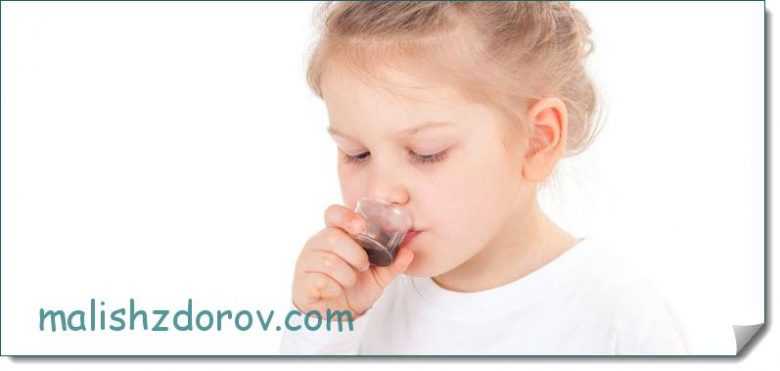
In severe cases of the disease, the dosage of the antibiotic in question may be increased by the doctor. Under no circumstances should you increase the dose of the drug on your own. This may cause serious side effects.
Drug interactions
According to the instructions for use, this pharmacological agent is often prescribed as part of complex therapy. There are certain recommendations regarding drug interactions:
- Ethanol, antacid substances and food slow down the absorption of the active component of this antibiotic.
- There is no interaction between azithromycin and drugs such as terfenadine, theophylline, carbamazepine, triazolam, and digoxin.
- The Azitrox suspension significantly increases the toxicity of the drugs Cycloserine, Methylprednisolone, Felodipine, as well as indirect anticoagulants.
- When the active substance is combined with digoxin, the blood level of the latter medication increases.
- When Azitrox is combined with warfarin, the anticoagulant effect increases, so it is very important to monitor the prothrombin time.
- Lincosamides significantly reduce the effectiveness of azithromycin, while chloramphenicol and tetracycline, on the contrary, increase it.
- In combination with the substances ergotamine and dihydroergotamine, the toxic effect of the latter drugs on the body increases.
- When combined with triazolam, its pharmacological effect increases and clearance decreases.
- The therapeutic effect of dihydroergotamine and ergot alkaloids is enhanced.
- An absolute contraindication is to combine the antibiotic Azitrox with heparin.

The instructions for use for the Azitrox suspension for children do not list analogues.
How to take and dosage for children
Children under 6 months of age should not use azithromycin. Even a minimal dose of the drug can cause stomach and intestinal bleeding and cramps.
- It is not recommended to give the drug in tablet form to children under 12 years of age. The tablet must be swallowed whole, without chewing or splitting. The drug is used in the form of syrup or suspension. Syrups and suspensions contain the required amount of the drug in 1 - 2 tsp, depending on body weight. Treatment is carried out for 4-5 days.
- For children from 6 to 8 years old, azithromycin is also prescribed in capsules. Children at this age can swallow capsules.
- In case of acute inflammation, it is possible to double the dose under the supervision of a pediatrician.
- Older children receive antibiotics in tablets of 0.125 g. 1–2 doses of the drug per day are allowed, at the rate of 10 mg per 1 kg of body weight. The drug is used for 3 to 5 days.
- Children weighing more than 45 kg are prescribed the same dosage as for adults (3 tablets of 0.5 g per day; minimum course of treatment is 3 days).
- A single dose of azithromycin per day and a short course of use, up to 3 to 5 days, are possible.
- For minor renal impairment, dosage reduction is not required.
Important: to improve the absorption of the antibiotic and increase the effectiveness of treatment, azithromycin should be used 1 hour before a meal or 2 hours after a meal.
Reviews
Reviews about this pharmacological drug on medical websites are mostly positive. Azitrox suspension for children is in great demand, since antibiotics are prescribed to children quite often. Parents note that children really like this medication, which is due to its pleasant smell and taste; it is easy to give it to the child and convenient to dose.
As for the effectiveness of this drug, according to information from reviews, the antibiotic helps very well in acute inflammatory diseases. It is prescribed for complications of flu or colds, for example, bronchitis in a child, pneumonia, and various skin infectious diseases.

In most cases, this medication was well tolerated by children, but reviews note that some patients experienced stool problems in the form of acute diarrhea. Dyspeptic symptoms were also observed in the form of slight nausea, regurgitation in breastfed children, etc.
Experts do not recommend self-medication, and if necessary, it is best to show the child to a doctor and get the appropriate prescription, since the drug may be contraindicated for him.
We reviewed the instructions for use of Azitrox for children.
How much and how to give
Azithromycin can be given to children only after receiving preliminary consultation from a specialist who has examined the child and made a diagnosis that requires the use of this drug. It is the specialist, and not the parents, who, in accordance with the instructions, can accurately calculate the dosage of the medication.
To make the doctor’s work easier, instructions for the antibiotic have been created, which involve calculating a one-time dose in accordance with the baby’s body weight. For infants, the dose is calculated especially accurately in order to prevent possible health problems and the development of adverse reactions in the baby.
The dosage is calculated based on the baby’s weight; for each kilogram there should be 10 mg of the active substance Azithromycin.
The use of a drug with a dosage of 100 mg per 5 ml involves the use of 0.5 ml of the prepared solution:
- for a baby weighing 5 kg, a dose of 2.5 ml of the drug is required (which is equal to 50 mg of the active substance);
- for weight 6 kg – 3 ml;
- for 7 kg – 3.5 ml;
- weight from 10 to 14 kg requires the baby to receive 5 ml of the finished solution.
For a three-year-old child weighing 15 kg, a dose of 150 mg of azithromycin will be sufficient. To obtain this amount of active substance, it is necessary to give Azithromycin to the child in the form of a suspension with other dosages of 200 mg per 5 ml:
- children from 15 to 25 kg of body weight (this is approximately 6-8 years old) receive 5 ml of the drug (this is 200 mg of the active ingredient);
- children from 25 to 35 kg of weight (9-10 years old) receive medication with a dose of 7.5 ml;
- children weighing from 35 to 45 kg (11-12 years old) can receive 400 mg per day, which equals 10 ml of solution;
- children over 12 years of age weighing 45 kg or more receive 12.5 ml of suspension at a time, which is equal to 500 mg of the main component. This dose assumes the use of capsules or tablets used in adult patients.




